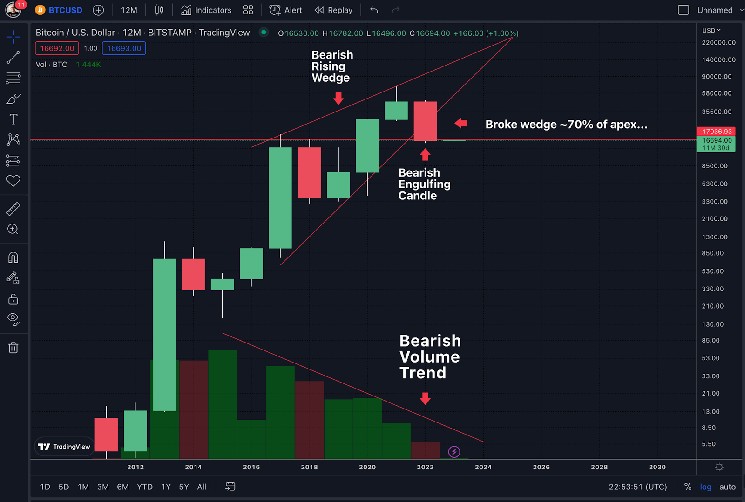Where is the stablecoin market heading in 2023?

It’s safe to say that the cryptocurrency market had a rather bad year. Besides the fact that prices have been falling since November 2021, the industry faced a series of black swan events, such as Terra’s collapse last May, followed by the bankruptcy of multiple major digital asset lenders, and now, the FTX scandal.
Furthermore, we are currently in the middle of an economic downturn, as governments worldwide are fighting to reduce record levels of inflation. Considering all this, as well as a decline in startup funding that could last up to 18 months, it seems like the Crypto Winter is going to stay for a while yet.
In light of such an outlook, crypto market participants are increasingly selling their holdings to avoid more significant losses in the future. And besides Bitcoin, Ether and other major cryptocurrencies, investors are also cashing out their stablecoins: data shows that investors redeemed around US$3.5 billion of stablecoins, including US$2 billion in USDT, in the two weeks after FTX’s implosion. Altogether, the stablecoin economy shed US$28 billion in market cap in 2022.
That said, getting rid of stablecoins may not be the wisest course of action in the long term. Let’s take a look and see why that might be the case.
The advantages of crypto, with price stability
In theory, stablecoins are cryptocurrencies that are intended to follow the value of major fiat currencies like the U.S. dollar, the euro and the British pound. As a result, they are meant to function just like standard coins but without the high volatility and frequent price swings associated with those.
The term “stablecoin” gives a clear message about its intention. In the extremely unstable world of cryptocurrency, where prices tend to fluctuate quickly, this category of assets claims to provide stability. And, in the case of reputable stablecoins that are reportedly backed directly via fiat or crypto reserves, they seem to be fulfilling their purpose just fine.
In fact, U.S. Securities and Exchange Commission Chair Gary Gensler stated that stablecoins reduce risks to the financial system, arguing that they should fall into a similar regulatory framework as money market funds.
At the same time, they are superior to fiat currencies, as stablecoins retain all the benefits of blockchain technology. These range from instantaneous and low-cost transactions to increased transparency and traceability, as well as the ability to use them in crypto apps for lending, borrowing, yield farming, and other activities.
Should stablecoins be regulated?
In the wake of the FTX collapse, the need for regulation and a more in-depth oversight over stablecoins has become the center of discussion.
And this shouldn’t come as a surprise. Taking into account that their market cap has now fallen below US$140 billion, governments worldwide have expressed their intent to regulate stablecoins in an attempt to ensure the stability of their economies and safeguard consumers.
There are multiple benefits to be found in going for a more thorough regulation. First, it could decrease systematic risks, as well as facilitate transparency and trust by licensing stablecoin issuers. Additionally, regulators could also order them to not just publicly disclose their reserves’ allocations, but to exclusively use cash and other low-risk instruments to maintain their coins’ pegs.
Furthermore, a clear regulatory framework around stablecoins could open up the market for traditional finance players that could issue their own stable digital assets. Doing so could boost crypto market activity and foster innovation, creating a new line of financial products.
At the same time, integrating stablecoins into a nation’s economy could increase the transparency of the financial system while making it more robust by drastically reducing the costs of transactions. The latter is especially important in the case of cross-border transfers, which can decrease the operational expenses of governmental organizations and enterprises.
For citizens, stablecoins have a lot of promise in emerging markets and developing economies, as they can be used to hedge against inflation and weak currencies. It’s a crucial solution to a real problem — the Argentine peso, for example, lost 90% of its value to the U.S. dollar in the last five years.
It seems to be the main reason why developing countries have outpaced developed nations in crypto adoption. For example, in Chainalysis’ 2022 crypto adoption index, only two out of the top 20 ranked jurisdictions were high-income nations. The rest were either lower-middle- or upper-middle-income countries. Statista’s data confirms this trend, with Nigeria, Thailand and Turkey claiming the top three spots for the percentage of crypto owners and users among respondents.
Where is the stablecoin market heading in 2023?
Combining low volatility and the benefits of blockchain technology, stablecoins play an integral role in the crypto industry. Despite recent sell-offs, stable digital assets are increasingly gaining ground against standard cryptocurrencies, reaching a new high in market share at 18% recently before retreating to 16%, but still above its 11% share of the total crypto market from a year ago.
Considering the advantages of regulation in this field, we can likely expect multiple jurisdictions to complete their regulatory frameworks for stablecoins by the end of 2023. Flexible designs and clear rules will give a much-needed boost to the crypto industry, which could help alleviate the impacts of the current winter and may even get the market ready for the next bull run.
Furthermore, the above regulatory advancements may help stabilize local economies and provide more opportunities for traditional finance and large tech players to join the market and issue their own stablecoins. At the same time, citizens could gain access to a safer and more convenient way to hedge against weak macroeconomic conditions and unstable national currencies.






 Bitcoin
Bitcoin  Ethereum
Ethereum  Tether
Tether  USDC
USDC  TRON
TRON  Dogecoin
Dogecoin  Cardano
Cardano  Bitcoin Cash
Bitcoin Cash  Chainlink
Chainlink  Monero
Monero  Stellar
Stellar  Zcash
Zcash  LEO Token
LEO Token  Litecoin
Litecoin  Hedera
Hedera  Dai
Dai  Cronos
Cronos  Tether Gold
Tether Gold  OKB
OKB  Ethereum Classic
Ethereum Classic  KuCoin
KuCoin  Gate
Gate  Algorand
Algorand  Cosmos Hub
Cosmos Hub  VeChain
VeChain  TrueUSD
TrueUSD  Tezos
Tezos  Dash
Dash  Stacks
Stacks  IOTA
IOTA  Basic Attention
Basic Attention  Theta Network
Theta Network  Decred
Decred  NEO
NEO  Synthetix
Synthetix  Qtum
Qtum  Ravencoin
Ravencoin  0x Protocol
0x Protocol  DigiByte
DigiByte  Nano
Nano  Zilliqa
Zilliqa  Holo
Holo  Siacoin
Siacoin  Numeraire
Numeraire  Waves
Waves  BUSD
BUSD  Status
Status  Pax Dollar
Pax Dollar  Enjin Coin
Enjin Coin  Ontology
Ontology  Hive
Hive  Lisk
Lisk  Steem
Steem  Huobi
Huobi  NEM
NEM  OMG Network
OMG Network  Bitcoin Gold
Bitcoin Gold  Augur
Augur  Ren
Ren  HUSD
HUSD